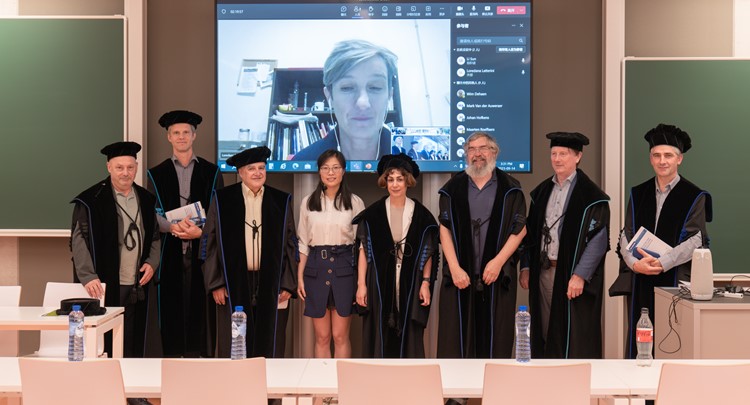Roeffaers Lab
Nanoscopy and catalysis
PhD Defense of Li Sun
PHD Defence Li Sun

Metal clusters (MCLs), stable groupings of a few to hundreds of metal atoms, have gained significant attention due to their unique electronic characteristics and versatile applications. However, the tendency of individual metal atoms to cluster and form larger nanoparticles diminishes their desirable properties. To counteract this, zeolites, rigid frameworks of aluminosilicate, have emerged as promising hosts. They effectively incorporate metal ions through ion exchange, facilitating MCL formation using diverse approaches. The optical features of MCLs can be tuned by different factors, and the understanding of their structure-property relationship will lay the groundwork for designing MCLs-zeolite materials with specific functions.
In this dissertation, coinage MCLs, including monometallic AgCLs and CuCLs, along with bimetallic AgCuCLs, are encapsulated within LTA and FAU Y zeolites. Upon excitation, these MCLs emit visible light with significant Stokes shifts, high photoluminescent quantum yields, and micro or submillisecond luminescence decay times. Selective synthesis strategies were applied to generate the clusters and optimize their optical properties. Various factors on the photophysical properties of the clusters were discussed systematically. A range of characterization techniques was used to elucidate the structure and formation mechanism of the clusters, as well as their steady-state and excited-state luminescence. An innovative application based on MCLs-zeolite was also validated and thoroughly studied.
In summary, this research contributes valuable insights into the systematic design, photophysical properties, and novel applications of MCLs-zeolite materials. These findings could inspire further exploration of other metal cluster-framework-based materials for diverse applications in imaging, sensing, and optoelectronics.
To enable comments sign up for a Disqus account and enter your Disqus shortname in the Articulate node settings.